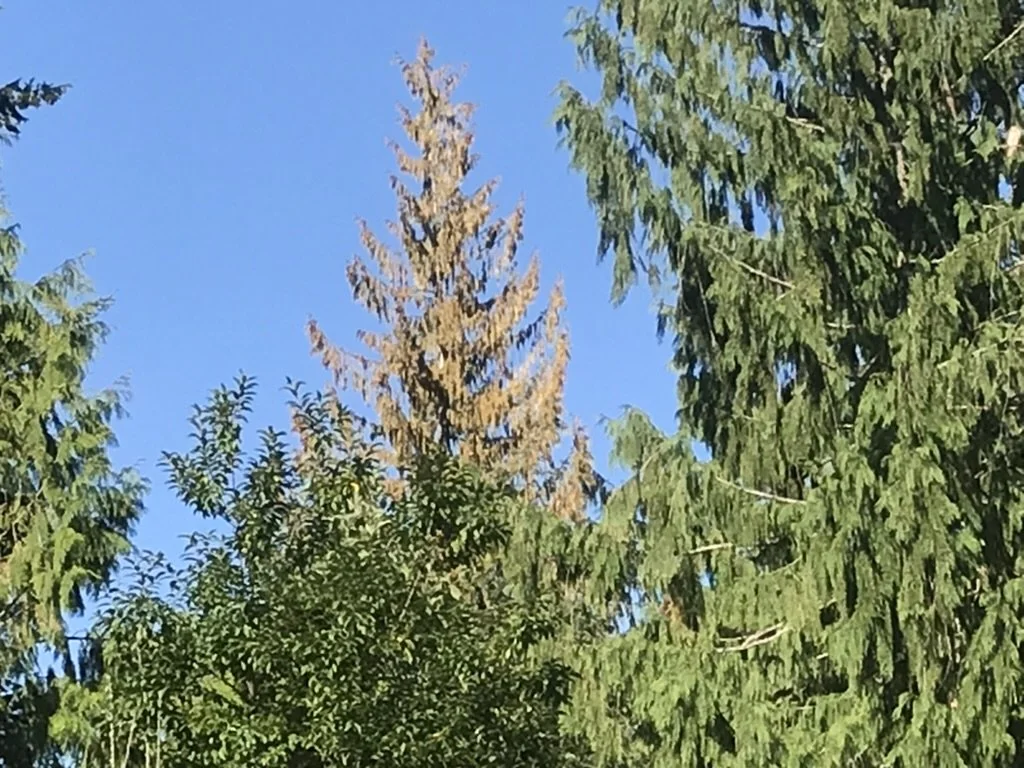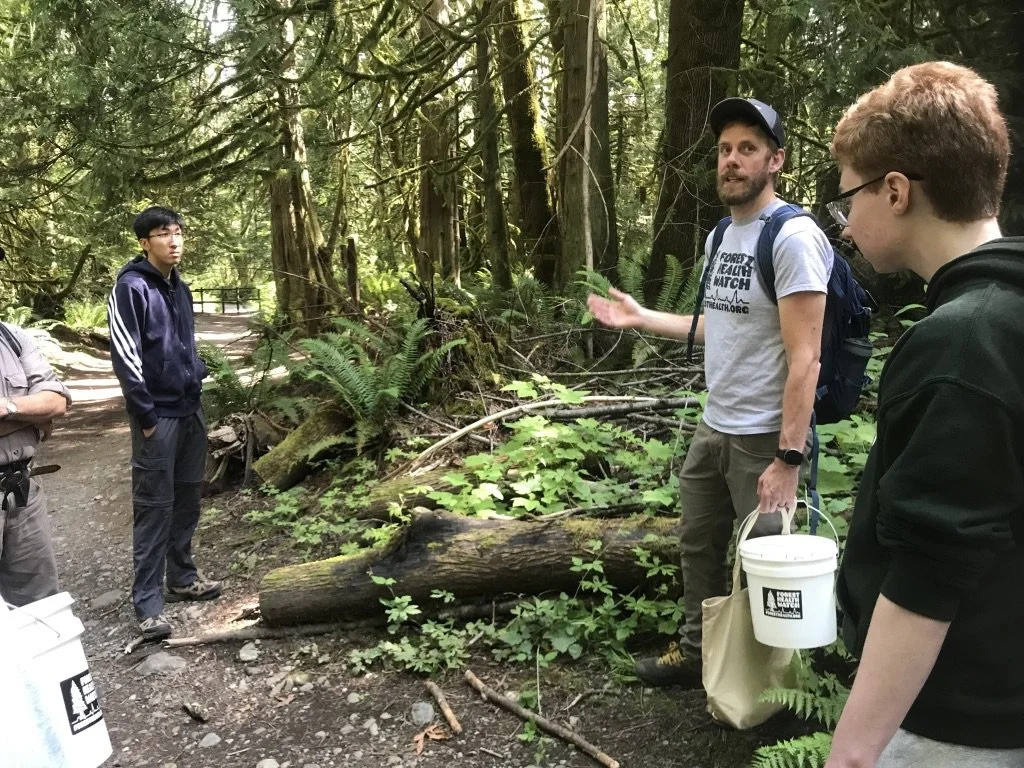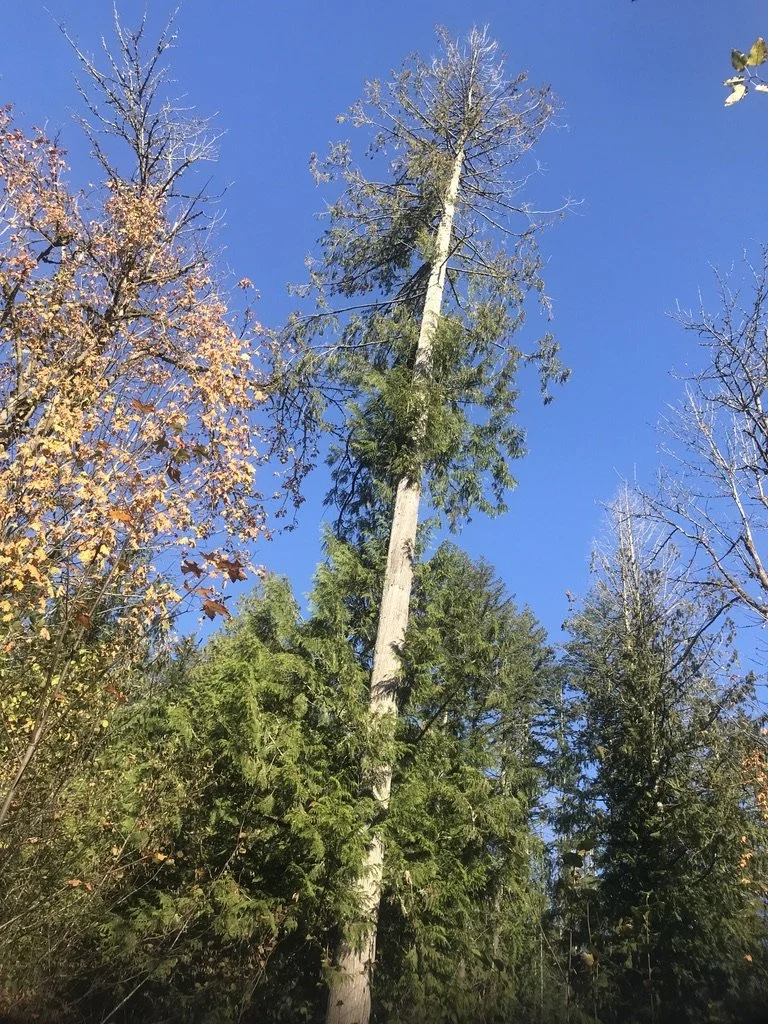Getting to the root of Western Red Cedar dieback with Forest Health Watch
Ever since Dr. Joey Hulbert taught me how to identify the health of Western Red Cedars, I can’t help but look up. Sadly, as I do, I am seeing more and more dead Western Red Cedar tops.
My home is nestled in the woods on the north east side of a hill surrounded by Western Red Cedar trees. At first I thought because of the positioning on the hill that the trees would be cool enough to continue to thrive. But in 2022, a number of treetops started to turn brown. As I am sure you recall, we had a very unusual heat dome in June of 2021 which broke temperature records - Issaquah Highlands reached a scorching 116 degrees fahrenheit while the Issaquah valley reached 113 degrees and Maple Valley 118. In 2022, Western Red Cedar brown tops began to appear in my cool wooded neighborhood although others have been noticing it for around 10 years all around the PNW.
Luckily scientists like Dr. Joey Hulbert and Forest Health Watch are looking for ways we can help Western Red Cedars survive climate change. Once trees are stressed (by things like heatdomes), they can become more vulnerable, so scientists are looking for more than one possible cause of dieback. IATC has had the pleasure of collaborating with Joey since we met in 2021 and last week he was back sharing knowledge and updates on his research! If you missed his Forest Health Watch Western Red Cedar webinar you can still view it here. One of Joey’s current focuses is looking for possible soil pathogens that might be contributing to dieback. We can thank IATC community scientists both out on their own and on IATC led hikes for collecting many of the soil samples used in the ongoing research.
In addition to the webinar, Joey also joined us on a hike and soils collection led by David Kappler! Here is David’s hike report:
We had a nice group of 9 soil samplers and students of cedar tree health on a Friday evening hike on the Tradition Lake Plateau. We started with a look from the East Sunset Trailhead across Sunset to see some cedar trees with obvious dieback. Something I failed to notice before and of concern since I can remember when those trees were planted when the Sunset Interchange was greatly expanded and these trees were planted in a designated mitigation area for loss of trees on the north side of I-90. Once up on the Plateau we saw several large cedars in obvious ill health on the south edge of the power line corridor. We chose to not brave the blackberry jungle to do soil sampling, but did take samples on our return using the Wetland Tree west of the Adventure Trail.
As we entered the west end of the Ruth Kees Big Tree Trail Joey quickly spotted very dead and dying cedar trees. We took samples in that area on return from the Big Tree. Near the Big Tree there was a really healthy group of mature cedar trees where we took soil samples. I insisted on venturing east of the Big Tree to show the group a nice patch of wild ginger. No showy flowers needed since they are pollinated by ants attracted by whatever smell their flowers give off.
Back to the start of the Ruth Kees Trail we took our samples in the dead and dying area. Crossed power line corridor through a tunnel formed by over branching vine maples. Had to tell the story about the Adventure Trail. Headed west on the Wetland Trail and came in the blackberry free route to the large cedars we had noted soon after getting up to the Plateau.
We had mixed feelings at the end of our hike. A really nice group of people on a beautiful Friday evening doing something constructive but with a whole new awareness of something not right in the natural world we so appreciate. We were glad we could help out Joey and other scientists trying to figure out what is going on with our cedar trees.
After this hike I know I will never look at a cedar tree without noting its health.
More Soil Samples are needed to come to a conclusion. You can help by becoming a community scientist!
There have been some pathogens found in the soil samples we have collected in Issaquah as well as other areas. In order to draw a firm conclusion Joey will need many more soil samples from both healthy and unhealthy trees. You and I can help by following these instructions for collecting soil samples. You can also use the iNaturalist mobile app and document on the Western Red Cedar Dieback project.
If you would like to help and have questions please feel free to send me an email at president@issaquahalps.org




